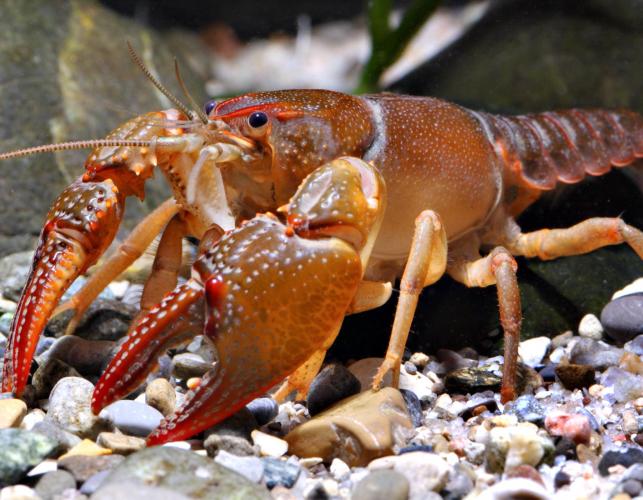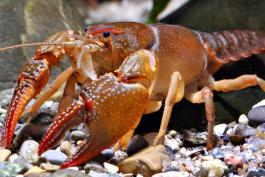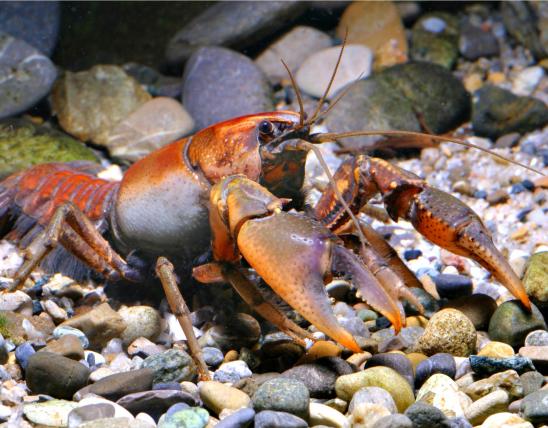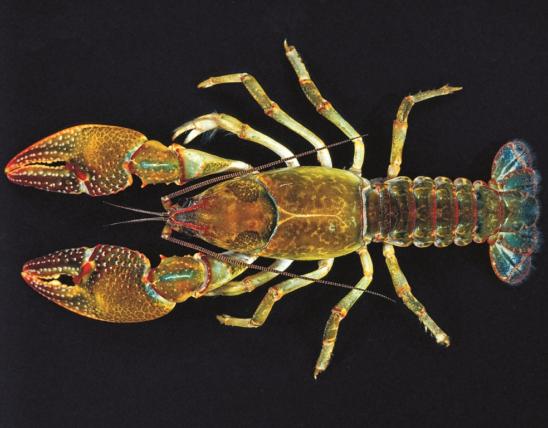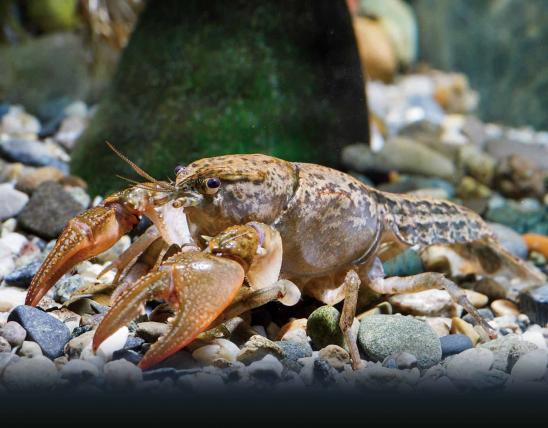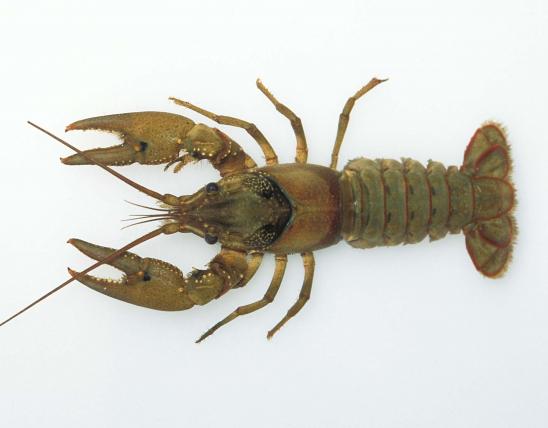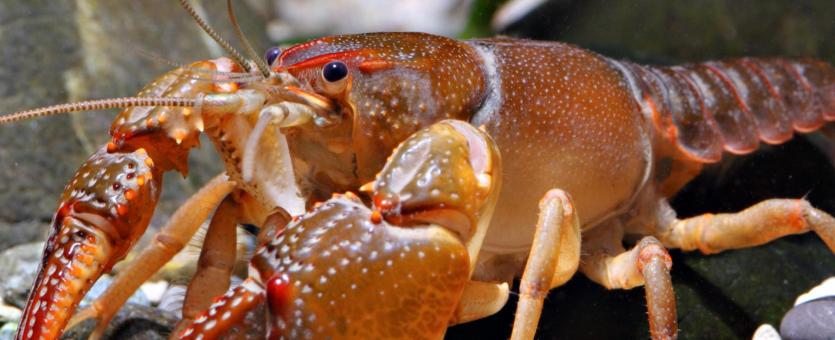
The devil crayfish is a powerfully built, burrowing species that is usually a uniform olive or tan, without obvious blotches or spots except for orange or red on the pincer tips or edges of other body parts. In the Prairie Region, many individuals have a gold stripe running along the midline of the abdomen, continuing narrowly along the carapace.
Similar species: In the Lowlands of southeast Missouri, the painted devil crayfish (Lacunicambarus ludovicianus) closely resembles the devil crayfish and in the past was considered simply a color variant of that species. It is turquoise blue or olive green, with 3 yellowish stripes on the abdomen and red outlining many body parts. Another burrowing species, the grassland (prairie) crayfish (Procambarus gracilis), superficially resembles the devil crayfish. However, adults of the grassland crayfish are often bright red. Also, in male devil crayfish, the tips of the reproductive structures (gonopods) are strongly curved; in prairie crayfish, they are nearly straight.
Adult length: about 3¼ to 4½ inches.
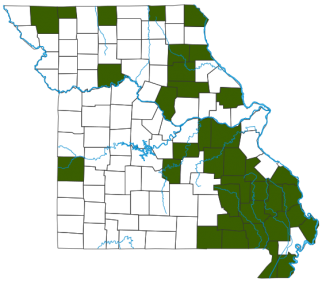
Statewide, but apparently absent from the southwestern Ozarks. The devil crayfish is perhaps our most widely distributed crayfish, occurring over all except the west-central part of the state.
Habitat and Conservation
The devil crayfish lives in burrows in timbered or formerly timbered areas along the floodplains of streams and along ditches. Its presence is often revealed by conspicuous mud chimneys at the burrow entrances. In early spring, young and some adults occur in roadside pools and other temporary waters. In dry spells, they seal the tops of the burrow and stay inside its safe, relatively humid environment.
Food
Crayfish are generally omnivores, eating a wide variety of plant and animal materials. This species emerges from its burrows at night to feed mostly on vegetation and other organic matter.
Status
This species occurs throughout much of the eastern United States. Because the devil crayfish spends most of its time underground, it is difficult to collect and is undoubtedly more widely distributed in our state, and elsewhere, than collection records indicate. Biologists who study burrowing crayfish often must laboriously dig them out of the ground, to depths of 4 or more feet.
The nomenclature of this species has been changing recently as biologists increase their understanding of the relationships among species. The "aff." in the scientific name means this animal has an "affinity" with but is not identical to the species L. diogenes.
Life Cycle
Mating occurs in fall and may continue into early spring. Females usually are carrying eggs by late winter or early spring. By May, large numbers of young are commonly found at the surfaces of fishless waters, meaning they are dispersing from the females. Between midsummer and into fall, they grow to about 1–2 inches long and start to dig their own burrows. Adults are generally inactive in their burrows during the hottest, driest parts of the summer.
Human Connections
“Devil” in the common name may refer to the red highlights, the burrowing habit, or the painful pinch the claws can deliver. The scientific name refers to the Greek philosopher Diogenes, founder of Cynic philosophy, who threw off societal complexities and slept in the streets in a big ceramic jar.
Ecosystem Connections
By digging its burrows, this crayfish mixes soils and eventually allows rainwater to penetrate underground. During dry seasons, small invertebrates from temporary ponds may survive in the reservoir of water at the bottom of these burrows. Crayfish are omnivores and are preyed upon by other animals.
